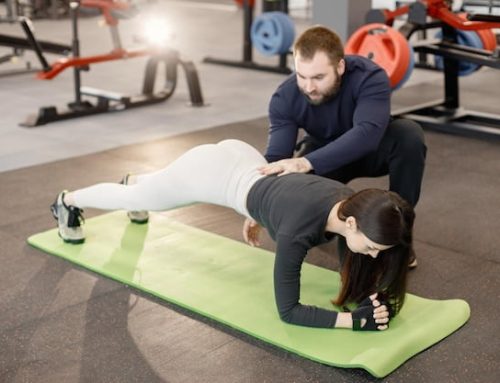Sports specific vs running circuit training
| Aspect | Sports-Specific Training | Running Circuit Training |
|---|---|---|
| Focus | Tailored exercises and drills to enhance specific sport skills and performance. | Combining running with various strength and cardio exercises. |
| Goal | Improve sport-specific skills, agility, power, and endurance. | Enhance overall cardiovascular fitness and muscular strength. |
| Exercise Variety | Emphasizes sport-specific movements and drills. | Incorporates a mix of running, bodyweight exercises, and equipment-based exercises. |
| Training Adaptability | Designed to replicate the demands of a particular sport. | Adaptable to different fitness levels and goals. |
| Skill Development | Prioritizes skill acquisition and technique refinement. | Focuses more on general fitness rather than skill development. |
| Sports Performance | Enhances performance in a specific sport or activity. | Improves overall endurance, strength, and body composition. |
| Training Schedule | Often integrated into a comprehensive training program. | Can be done as a standalone workout or part of a larger plan. |
| Injury Prevention | Targets specific muscles and movement patterns related to the sport, reducing the risk of sport-specific injuries. | Promotes overall fitness and strength, reducing the risk of general injuries. |
| Training Variety | Offers a wide range of exercises specific to the sport. | Provides variety through different running routes and exercises. |
| Targeted Athletes | Ideal for athletes participating in a specific sport or competition. | Suitable for individuals looking for a well-rounded workout. |
Please note that these are general comparisons, and the specifics may vary depending on the sport, individual preferences, and goals. Both types of training have their merits, and the choice depends on your specific needs and objectives.
What is Sports-Specific Training?
Sports-specific training refers to a workout regimen that is specifically designed for athletes to improve their performance in a particular sport. It is a type of training that focuses on enhancing the movements and skills that are unique to a particular sport, such as speed, agility, power, strength, endurance, and flexibility.
Athletes can benefit from sports-specific training by improving their overall athleticism and minimizing the risk of injury. Sports-specific training can also help athletes improve their technique, which in turn can enhance their performance and help them achieve their goals.
One example of sports-specific training is running circuit training. This type of training is designed to improve an athlete’s running speed, endurance, and agility. Running circuit training involves running different distances at various intensities and elevations, as well as performing specific exercises that target the muscles used in running.
The Benefits of Running Circuit Training
Running circuit training, which combines running with various strength and cardio exercises, offers several benefits. Here are some advantages of incorporating running circuit training into your fitness routine:
- Improved Cardiovascular Fitness: Running is an excellent cardiovascular exercise that increases your heart rate, strengthens your heart, and improves lung capacity. By combining running with other exercises in a circuit format, you can elevate your heart rate even further, resulting in enhanced cardiovascular fitness.
- Efficient Full-Body Workout: Circuit training incorporates a mix of running and strength exercises, providing a well-rounded, full-body workout. Running engages lower body muscles, such as the calves, quadriceps, hamstrings, and glutes, while the strength exercises target various muscle groups, including the upper body, core, and lower body. This comprehensive approach helps build strength, endurance, and muscular balance.
- Increased Calorie Burn: Running circuit training is a high-intensity workout that can help you burn a significant number of calories in a short amount of time. The combination of running and strength exercises keeps your heart rate elevated throughout the session, resulting in an efficient calorie burn and potential fat loss.
- Enhanced Strength and Muscle Tone: Circuit training involves performing exercises with or without weights, which challenges your muscles and promotes strength development. The inclusion of strength exercises, such as squats, lunges, push-ups, and planks, helps build lean muscle mass and promotes overall muscle tone.
- Adaptability to Fitness Levels: Running circuit training can be adapted to various fitness levels. You can modify the intensity, duration, and difficulty of the exercises based on your individual capabilities and goals. Beginners can start with lighter weights or bodyweight exercises, gradually progressing as their fitness improves.
The Components of Running Circuit Training
Running circuit training typically involves a combination of running and strength training exercises. Here are some common components of running circuit training:
| Exercise | Description |
|---|---|
| Interval runs | Running at varying distances and intensities, such as sprinting for 30 seconds, jogging for a minute, and repeating for a set number of reps |
| Hill runs | Running up hills or stairs to build leg strength and endurance |
| Plyometric exercises | Exercises that involve explosive movements, such as jumping or bounding, to improve power and agility |
| Strength training exercises | Exercises that target the muscles used in running, such as squats, lunges, and calf raises |
| Core exercises | Exercises that target the abdominal and back muscles, such as sit-ups and planks, to improve stability and balance while running |
Designing a Running Circuit Training Program
To design a running circuit training program, athletes should first identify their goals and evaluate their current fitness level. From there, they can create a plan that includes a combination of running and strength training exercises that are tailored to their sport and fitness level.
Athletes should also consider the frequency and duration of their running circuit training program. The recommended frequency for running circuit training is two to three times per week, with each session lasting 30 to 60 minutes.
It is important for athletes to gradually increase the intensity and duration of their running circuit training program over time. This can help prevent injury and ensure that athletes continue to see improvements in their performance.
The Importance of Recovery
Recovery is an important component of any training program, including running circuit training. Athletes should incorporate rest days into their program to allow their body to recover and repair itself.
In addition to rest days, athletes can also benefit from other recovery techniques, such as stretching, foam rolling, and massage. These techniques can help improve circulation, reduce muscle soreness, and improve range of motion.
Conclusion
Sports-specific training, such as running circuit training, can be an effective way for athletes to improve their performance in a particular sport. By targeting the movements and skills unique to their sport, athletes can become faster, stronger, and more efficient. With the right program and recovery techniques, athletes can achieve their goals and take their performance to the next level.






